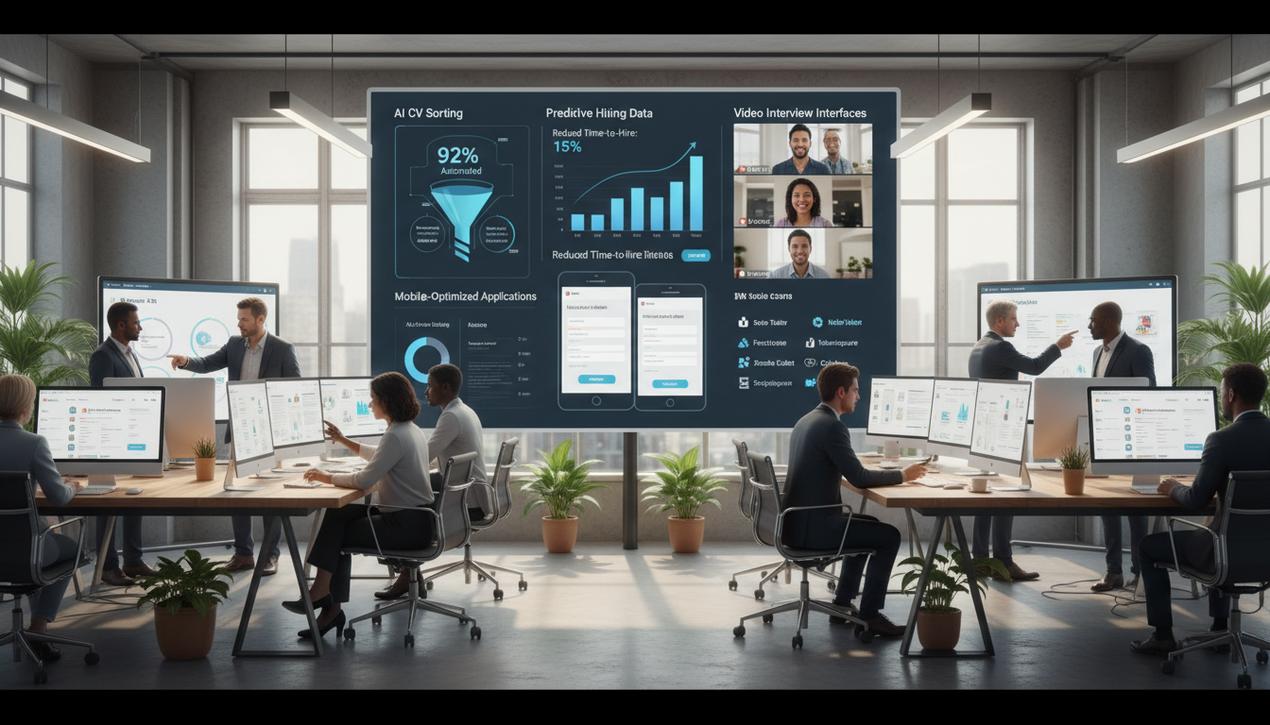The 2025 Guide to the 12 Best Software Creation Tools


The software development industry is booming. In 2025, the global application development software market is valued at over $257 billion, with a projected annual growth rate of nearly 23% through 2030. These staggering figures highlight the critical importance of having the right tools to transform an idea into a functional, high-performing, and secure application, where aspects like following a guide to mobile app design are key. Whether you are a seasoned developer, a project manager, or an entrepreneur, your choice of technology stack is a strategic decision that directly impacts productivity, code quality, and time-to-market. The era of the lone developer coding in a simple text editor is over. Today, software creation is a complex, collaborative process orchestrated by a suite of specialized tools. From artificial intelligence-powered Integrated Development Environments (IDEs) to CI/CD automation platforms, every component of the development chain is crucial. This comprehensive guide introduces the 12 indispensable tools for creating software in 2025.
Key Trends Shaping Development Tools in 2025
Before diving into our tool selection, it’s essential to understand the underlying currents transforming the software development landscape. In 2025, several major trends are redefining the expectations and capabilities of modern tools.
The Ubiquity of Artificial Intelligence
AI is no longer a futuristic concept; it is a daily assistant for millions of developers. AI-driven code completion tools, like GitHub Copilot, can suggest lines of code or even entire functions, drastically speeding up development. This is just one of many use cases, as there are many powerful ChatGPT alternatives available. AI is also being integrated into testing phases to generate relevant test cases and into analysis tools to detect complex bugs that a human eye might miss.
The “Cloud Native” and DevOps Paradigm
Modern development is intrinsically linked to the cloud. “Cloud Native” applications are designed to be deployed, updated, and managed in an automated and scalable manner. This approach necessitates the use of containerization tools like Docker, orchestration tools like Kubernetes, and continuous integration and continuous deployment (CI/CD) pipelines to automate the software lifecycle.
The Rise of Low-Code / No-Code Platforms
Facing a shortage of developers and the need to accelerate digital transformation, Low-Code and No-Code platforms are gaining popularity. They empower users with little to no programming skills to create functional applications through graphical interfaces and pre-built templates, thereby democratizing software creation.
The 12 Essential Tools for the Software Lifecycle
Creating high-performance software relies on a coherent and efficient toolchain that covers every stage of the process, from writing code to project management.
Integrated Development Environments (IDEs)
The IDE is the developer’s primary workstation. It centralizes the code editor, debugger, and build tools.
1. Visual Studio Code (VS Code)
Developed by Microsoft, VS Code has become the world’s most popular code editor. Lightweight, fast, and extremely extensible through its vast marketplace of plugins, it adapts to almost any language and framework. Its native Git integration and built-in terminal make it a versatile and powerful tool.
2. The JetBrains Suite (IntelliJ IDEA, PyCharm, etc.)
JetBrains offers a family of specialized IDEs for every major language (IntelliJ for Java, PyCharm for Python, WebStorm for JavaScript). Known for their powerful “code intelligence,” advanced refactoring capabilities, and ergonomic design, they are often the preferred choice for professional developers working on complex projects.
3. Eclipse IDE
Despite being over 20 years old, Eclipse remains a benchmark in the Java ecosystem. Open-source and highly flexible due to its plugin architecture, it is particularly valued in the corporate world for developing Java EE applications and embedded solutions.
Version Control and Collaboration
Code is a living asset. Its management, history, and the collaboration between developers are handled by version control systems.
4. GitHub
More than just a hosting service for Git repositories, GitHub is a true collaborative development platform. It integrates code reviews (pull requests), issue tracking, automation (GitHub Actions), and project management. It is the “social network” for developers, an essential hub for both open-source and enterprise projects.
5. GitLab
GitLab presents itself as a complete DevOps platform delivered as a single application. In addition to source code management, it natively integrates CI/CD tools, security scanning (SAST, DAST), monitoring, and package registries. It is a powerful all-in-one solution for teams looking to unify their toolchain.
Automation (CI/CD) and DevOps
Automation is the cornerstone of modern development. It enables code to be built, tested, and deployed reliably and quickly.
6. Jenkins
Jenkins is the quintessential open-source automation server. Extremely flexible, it can orchestrate complex CI/CD pipelines through its ecosystem of over 1,900 plugins. It integrates with nearly every development tool, from build to deployment on platforms like Kubernetes.
7. Docker
Docker has revolutionized how applications are packaged and deployed. By “containerizing” an application and its dependencies, Docker ensures that it will run the same way in any environment. It is a fundamental tool for the DevOps approach and Cloud Native development.
Project Management and Agile Tracking
Software development is a project that must be planned, tracked, and adapted. This often starts with using online brainstorming tools to define the scope. Agile management tools are essential for organizing the work of teams.
8. Jira
Jira is the leading tool for Agile project management. It allows teams to create backlogs, plan sprints (Scrum), visualize workflow on Kanban boards, and track bugs and tasks with fine-grained detail. It is at the core of thousands of development teams worldwide.
9. Monday.com
More visual and flexible than Jira, Monday.com is a “Work OS” platform that adapts to many use cases, including software development. It excels at high-level planning, roadmap tracking, and automating repetitive workflows, facilitating communication between technical and non-technical teams.
Quality, Testing, and Code Analysis
Good software is not just functional; it is also robust, secure, and maintainable. These tools help ensure code quality.
10. SonarQube
SonarQube is an open-source platform for continuous inspection of code quality. It analyzes source code to detect bugs, security vulnerabilities, and “code smells” that affect maintainability. Integrated into a CI/CD pipeline, it acts as a quality gate, preventing poor-quality code from reaching production.
11. Postman
Modern applications communicate via APIs. Postman is the industry-standard platform for building, testing, and documenting APIs. It allows developers to create and send HTTP requests, automate test suites, and generate interactive documentation for API consumers.
12. CMake
For projects written in C or C++, CMake is an indispensable open-source tool. It automates the generation of build files (Makefiles, Visual Studio projects, etc.) in a cross-platform manner. Used by massive projects like MySQL, KDE, and Netflix, it simplifies the compilation of complex code across different operating systems.
How to Choose the Right Tool Stack for Your Project
Faced with this multitude of options, the choice can be daunting. Here are a few criteria to guide you:
- Project Technology: Your choice of IDE will primarily depend on your programming language (IntelliJ for Java, PyCharm for Python).
- Team Size: For a small team, an all-in-one solution like GitLab might be simpler to manage. Larger organizations may prefer to assemble best-in-class tools from each category (GitHub + Jenkins + Jira).
- Company Culture: A mature DevOps culture will require advanced automation and monitoring tools. An Agile culture will rely heavily on Jira or Monday.com.
- Budget: Many tools (VS Code, Jenkins, Eclipse) are open-source and free, while others (JetBrains, Jira at scale) require paid licenses.
Choosing the right tools to create software in 2025 is a strategic investment. The perfect combination does not exist, but a wise selection, aligned with AI and DevOps trends, can multiply your team’s effectiveness. The key is to build an integrated toolchain that automates low-value tasks, facilitates collaboration, and provides clear insights into project quality and progress. By building on solid foundations like a good IDE, a robust version control system, and an efficient CI/CD pipeline, you give yourself the best chance to deliver high-quality software, faster.




